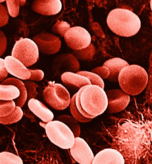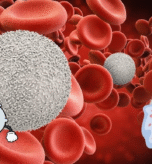The beauty industry has undergone a significant transformation in recent years, thanks to the integration of technology. From skincare and makeup to haircare and wellness, technology has revolutionized the way we approach beauty, making it more accessible, personalized, and effective. In this article, we’ll explore the latest trends and innovations in beauty technology, and how they’re changing the face of the industry.
The Rise of Personalized Beauty
One of the most significant advancements in beauty technology is the rise of personalized beauty. With the help of artificial intelligence (AI), machine learning, and data analytics, beauty companies can now offer customized products and treatments tailored to an individual’s specific skin type, concerns, and needs.
For instance, companies like Neutrogena and Olay use AI-powered skin analysis tools to provide personalized skincare recommendations. These tools use machine learning algorithms to analyze a person’s skin type, concerns, and lifestyle, and then recommend products and routines that are tailored to their specific needs.
Virtual Try-On and Augmented Reality
Virtual try-on and augmented reality (AR) are also transforming the beauty industry. With the help of AR technology, consumers can now try on makeup, hair colors, and other beauty products virtually, without having to physically apply them.
Companies like Sephora and L’Oréal have developed AR-powered virtual try-on tools that allow customers to see how different products would look on their skin or hair before making a purchase. This technology has not only improved the shopping experience but also reduced returns and increased customer satisfaction.
At-Home Beauty Devices
At-home beauty devices have become increasingly popular in recent years, thanks to advancements in technology. Devices like facial steamers, micro-needling rollers, and LED light therapy masks are now available for consumers to use in the comfort of their own homes.
These devices offer a range of benefits, from improved skin texture and reduced fine lines to enhanced hair growth and relaxation. Companies like Dr. Dennis Gross Skincare and Theradome offer high-quality, FDA-cleared devices that are designed to provide professional-level results at home.
The Role of Artificial Intelligence in Beauty
Artificial intelligence is playing an increasingly important role in the beauty industry, from product development to customer service. AI-powered chatbots are being used to provide personalized customer support, while AI-driven product development is enabling companies to create more effective and targeted products.
For instance, companies like Estee Lauder and Unilever are using AI to analyze consumer data and develop new products that meet specific needs and trends. AI is also being used to predict consumer behavior, identify new business opportunities, and optimize supply chains.
The Impact of 3D Printing on Beauty
3D printing is another technology that’s transforming the beauty industry. Companies like and are using 3D printing to create customized beauty products, such as lipsticks and skincare products, that are tailored to an individual’s specific needs.
3D printing allows for the creation of complex products with unique textures and structures, which can’t be produced through traditional manufacturing methods. This technology has opened up new possibilities for product innovation and customization.
The Future of Beauty Technology
As technology continues to evolve, we can expect to see even more innovative solutions in the beauty industry. Some of the trends to watch out for include:
- Gene editing and genomics: Gene editing technologies like CRISPR are being explored for their potential to create new, more effective beauty products.
- Biotechnology: Biotechnology is being used to develop new, sustainable ingredients and products that are better for the environment.
- Virtual and augmented reality: Virtual and augmented reality technologies will continue to play a larger role in the beauty industry, from virtual try-on to immersive brand experiences.
Conclusion
Beauty technology is revolutionizing the industry, offering new possibilities for product innovation, customization, and customer engagement. From personalized beauty to at-home devices and AI-powered product development, technology is changing the way we approach beauty. As technology continues to evolve, we can expect to see even more innovative solutions that will shape the future of the beauty industry.
Key Takeaways
- Personalized beauty is on the rise, with companies using AI and machine learning to offer customized products and treatments.
- Virtual try-on and AR are transforming the shopping experience, allowing customers to try on products virtually.
- At-home beauty devices are becoming increasingly popular, offering professional-level results in the comfort of one’s own home.
- AI is playing a key role in the beauty industry, from product development to customer service.
- 3D printing is being used to create customized beauty products with unique textures and structures.
Recommendations for Consumers
- Look for companies that offer personalized beauty recommendations and products tailored to your specific needs.
- Try out virtual try-on and AR tools to find products that work best for you.
- Invest in at-home beauty devices that offer professional-level results and are easy to use.
- Stay informed about the latest trends and innovations in beauty technology to stay ahead of the curve.
Recommendations for Businesses
To stay ahead in the beauty industry, businesses should consider the following strategies:
- Invest in AI-powered product development: Use machine learning algorithms to analyze consumer data and develop new products that meet specific needs and trends.
- Implement virtual try-on and AR technology: Provide customers with immersive shopping experiences that allow them to try on products virtually.
- Develop at-home beauty devices: Create devices that offer professional-level results and are easy to use, providing customers with convenience and flexibility.
- Leverage social media and influencer marketing: Partner with influencers and use social media platforms to showcase products and reach a wider audience.
- Focus on sustainability and eco-friendliness: Develop products and packaging that are environmentally friendly, appealing to the growing demand for sustainable beauty products.
- Use data analytics to optimize supply chains: Analyze consumer data to predict demand and optimize supply chains, reducing waste and improving efficiency.
- Create personalized beauty experiences: Use AI and machine learning to offer customized product recommendations and treatments, enhancing customer satisfaction and loyalty.
- Invest in employee training and education: Provide employees with the knowledge and skills needed to effectively promote and sell beauty products, ensuring a high level of customer service.
By implementing these strategies, businesses can stay competitive, improve customer satisfaction, and drive growth in the beauty industry.
Additional Trends to Watch
- Gene editing and genomics: Explore the potential of gene editing technologies like CRISPR to create new, more effective beauty products.
- Biotechnology: Develop new, sustainable ingredients and products that are better for the environment.
- Virtual and augmented reality: Continue to develop immersive shopping experiences that allow customers to try on products virtually.
Key Takeaways
- Businesses should invest in AI-powered product development, virtual try-on and AR technology, and at-home beauty devices.
- Sustainability and eco-friendliness are key trends in the beauty industry.
- Data analytics can be used to optimize supply chains and predict demand.
- Personalized beauty experiences are becoming increasingly important.
By staying ahead of these trends and implementing the right strategies, businesses can thrive in the competitive beauty industry.



